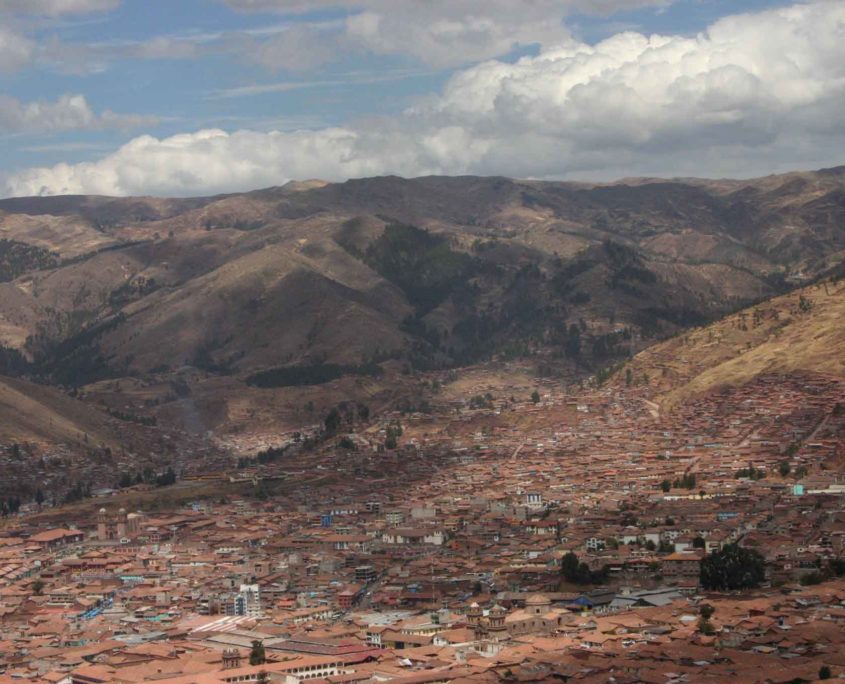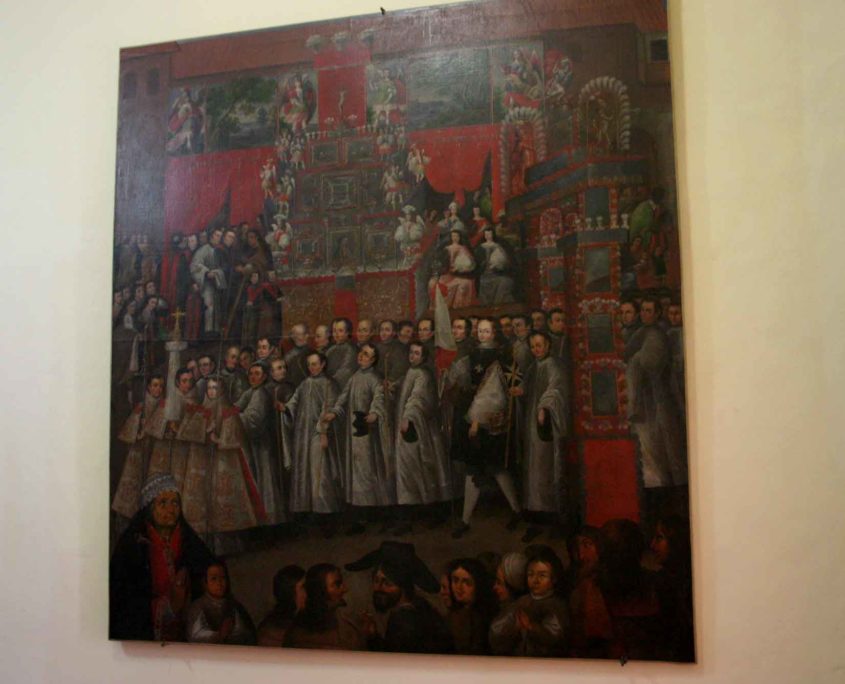Happy Monday!
Here’s a view of Cuzco from above:

When one makes that “bucket list” trip to Peru and Machu Picchu, we recommend flying to Cuzco and immediately traveling into the Sacred Valley which is lower in elevation. Unless you are accustomed to high elevations, Cuzco may be a bit overwhelming at over 11,000 ft elevation (3,400 m.)
After your journey to Machu Picchu, you should return to Cuzco (hopefully more acclimated to the elevation,) and check out this historic city.
Here’s a picture from the Cuzco Museum of Art:

Returning to traditional weaving is helping families in Peru’s Sacred Valley. We’ve visited the market at Pisac, and the textiles there are outstanding. A good value for the traveler fortunate enough to discover them. New article in the Guardian:
Ccaccaccollo village’s weaving market is perched on an emerald-green Andean mountainside, looking out across Peru’s Sacred Valley. Inside a straw-roofed hut, two women sit at wooden looms working the foot treadles, transforming the frames into thrusting locomotives. Pumpkin-orange and white fibres intertwine as the shafts shift up and down – clack-clack, clack-clack, clack-clack.
Next door, bowls bursting with black corn, eucalyptus leaves and pearl white beans line the terracotta shelves. A woman plunges a ball of alpaca fibres into a pot of steaming dye and pulls out the mesh; it drips crimson like the head of a decapitated warrior.
The 60 Quechua women running this market in Ccaccaccollo, 15 miles north-east of Cusco and about 80 east of Macchu Picchu, source Andean materials to dye clothes, from qolle, a shrunken cauliflower-looking plant, to cochinillas, which are small insects that burrow into cacti.
“Not long ago this was a sad place. We lost our way of life,” Francisca Qquerar Mayta, a spokesperson for the women, tells me. Sacred Inca traditions, which survived the mid-16th century Spanish conquest, disappeared from Ccaccaccollo in the 1990s after a tourism boom caused an economic imbalance in the Sacred Valley.
Most significant was the increase in visitor numbers to Machu Picchu, which surged from about 95,000 a year (including locals) in 1992 to 1.1 million in 2014. Profits rose, too, transforming the region’s capital Cusco into a tourist hub with swanky hotels and expensive restaurants. And while communities close to sacred Inca ruins, like Pisac and Ollantaytambo, also thrived, others were forgotten. Fears over discrimination saw children forced to abandon their indigenous roots, including their native tongue Quechua. Many relocated to tourist locations to become street sellers, or to beg for money.
Full article here: A rebirth of ancient skills revitalises a village in Peru’s Sacred Valley | Travel | The Guardian
A meeting to share the knowledge of ancient Peruvian cultures from the old to the young is taking place in Cuzco. Via El Comercio Peru (Google translate)
A “Meeting of sages” brings together 40 representatives from the provinces of Calca, Quispicanchis, Canchis, Canas and Chumbivilcas.
Continue reading Cusco: seniors pass on their ancestral knowledge